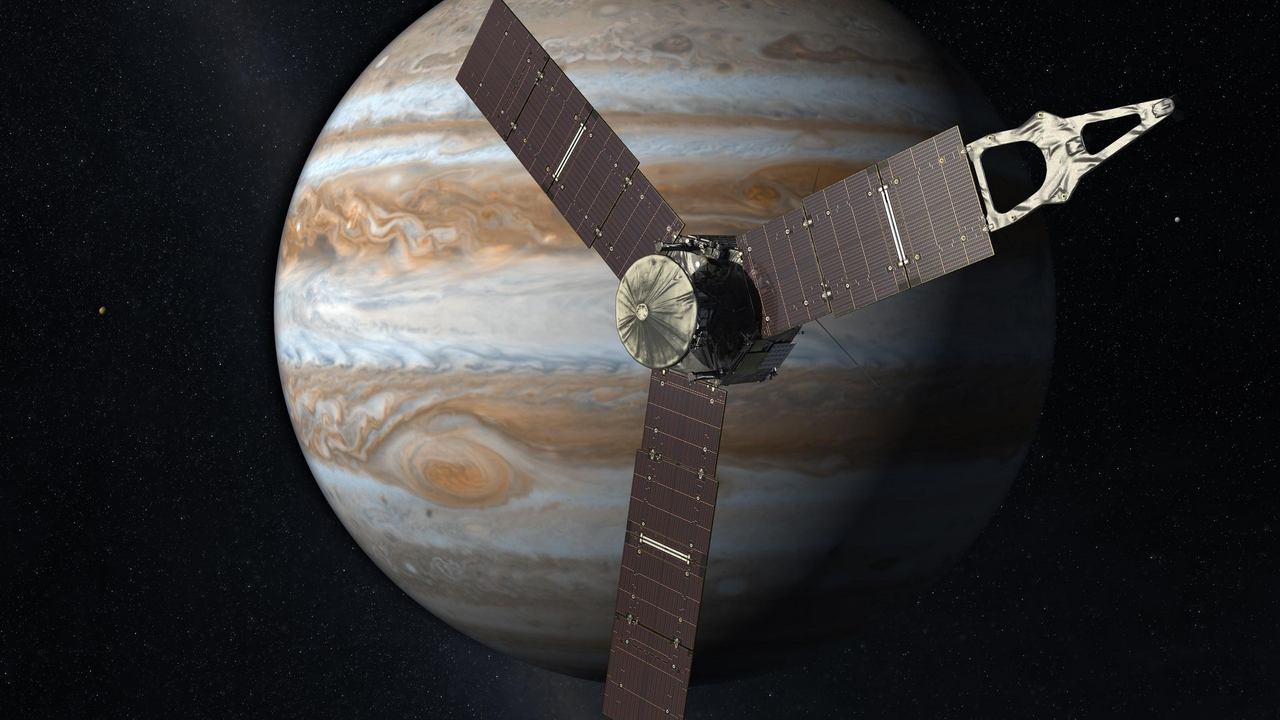The Juno spacecraft by the National Aeronautics and Space Administration (NASA) had two back-to-back flybys to get a closer look at Jupiter’s moon Ganymede. It is one of 79 known moons that orbit Jupiter. Ganymede is larger than Mercury and is the only moon that has a magnetic field. According to
Space.com, a good view of Ganymede has not been captured since the Galileo spacecraft swung past it in the year 2000. Launched a decade ago, Juno has been orbiting Jupiter for five years. It will come within 1038 km (645 miles) of the largest moon in the solar system. [caption id=“attachment_9693761” align=“alignnone” width=“1280”] Left to right: The mosaic and geologic maps of Jupiter’s moon Ganymede were assembled incorporating the best available imagery from NASA’s Voyager 1 and 2 spacecraft and NASA’s Galileo spacecraft. Credit: USGS Astrogeology Science Center/Wheaton/NASA/JPL-Caltech[/caption] As mentioned in a blog by NASA’s Jet Propulsion Laboratory (
JPL), Juno will get closer to Ganymede on 7 June at 11:05 pm IST (1:35 pm EDT). It further mentions that with the help of the Juno spacecraft, researchers will get an insight into the ionosphere, ice shell, composition, and magnetosphere of Jupiter’s moon. Italian astronomer Galileo Galilei discovered Ganymede in 1610 when he also discovered three other biggest moons of Jupiter. Scott Bolton, principal investigator of Juno from San Antonio’s Southwest Research Institute said that there will be special equipment on Juno that will make the researchers see Ganymede in a way that has never been possible before. Bolton added that by flying so close to Jupiter’s moon, they will help the next generation of missions including the JUpiter ICy moons Explorer [JUICE] by the European Space Agency (ESA) and Europa Clipper by NASA. The navigation camera in the Stellar Reference Unit (SRU) of Juno will not only help the spacecraft to follow its path but also be used to collect images to investigate the high-energy radiation environment in Ganymede. Three hours before the Juno spacecraft will make its closest approach, its equipment is going to start collecting data. In order to get details about its water-ice crust, Ultraviolet Spectrograph (UVS), Microwave Radiometer’s (MWR), and Jovian Infrared Auroral Mapper (JIRAM) instruments will be used for the purpose. A radio occultation experiment will also be performed with the help of signals received from the X-band and Ka-band radio wavelengths of Juno. This experiment will investigate Ganymede’s ionosphere. “This is the closest any spacecraft has come to this mammoth moon in a generation,” Bolton said. “We are going to take our time before we draw any scientific conclusions, but until then we can simply marvel at this celestial wonder – the only moon in our solar system bigger than the planet Mercury.” NASA released Juno’s first two pictures Tuesday, highlighting Ganymede’s craters and long, narrow features possibly related to tectonic faults. One shows the moon’s far side, opposite the sun. With inputs from The Associated Press
The spacecraft will conduct its flyby to get a closer look at Ganymede on 7 June at 11:05 pm IST.
Advertisement
End of Article


)
)
)
)
)
)
)
)
)



